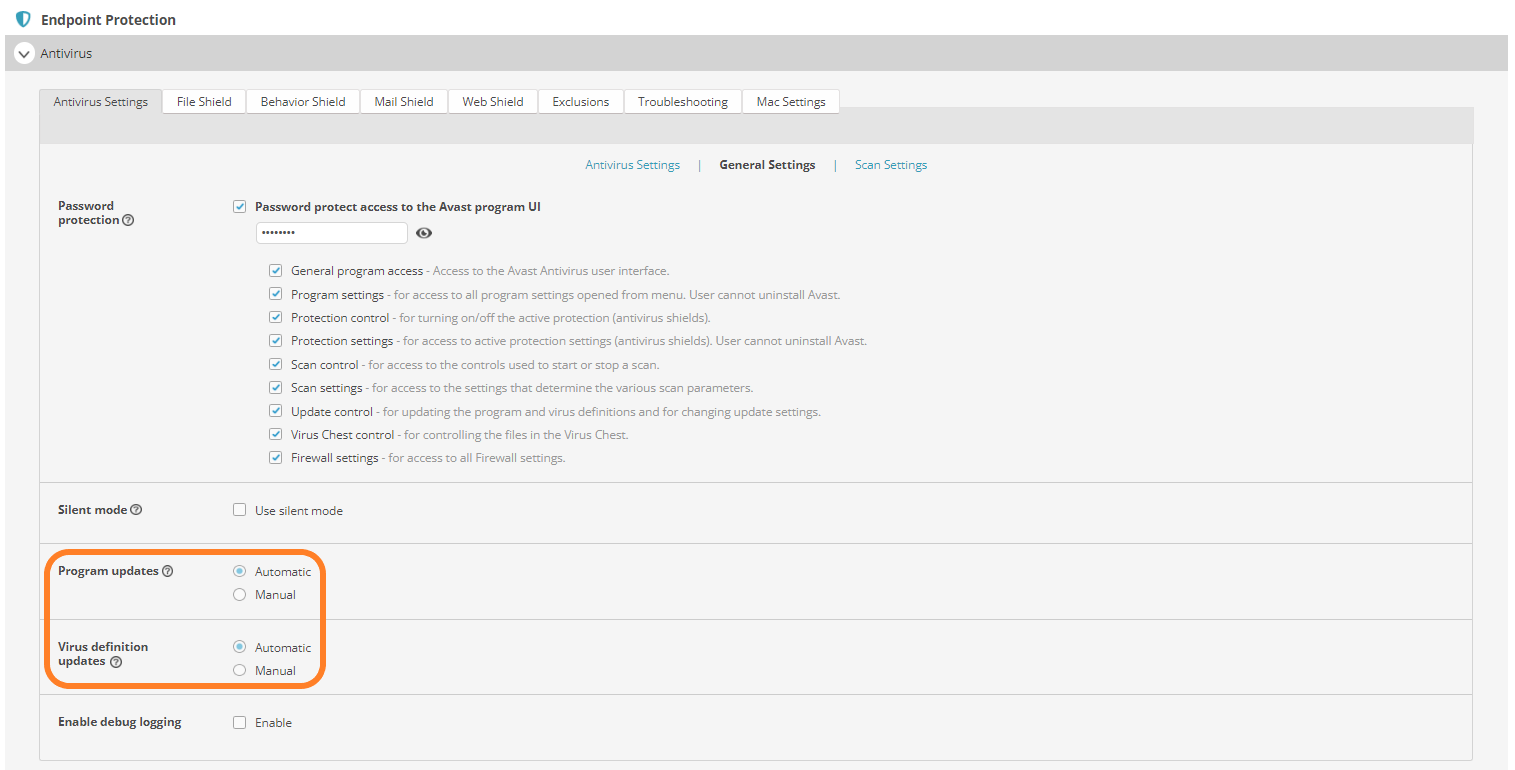PROXIMANOVA-LIGHT.OTF PROXIMANOVA-LIGHTIT.OTF PROXIMANOVA-EXTRABLD.OTF PROXIMANOVA-BOLD.OTFPROXIMANOVA-BLACK.OTF
Get this font in here!
This Article Applies to:
- Avast Business CloudCare
IMPORTANT: The CloudCare console does not support opening multiple tabs in the same browser session. Please use multiple browsers or incognito mode instead.
Tasks will only run on the assigned devices when those devices are online and communicating with the console.
From the Antivirus settings of your policy, you can set up automatic or manual updates of the Antivirus program and virus definitions as follows:
- Go to the Policies page (at partner level for master policies or customer level for customer policies)
- Select the desired policy from the left-hand pane
- Under Endpoint Protection, expand the Antivirus section
- Go to the Antivirus Settings tab, then select General Settings
- In the Program updates and Virus definitions updates sections, choose whether the updates are run automatically once they become available (recommended) or manually
- Save your changes

Updates are sent either directly via Avast servers or any configured update agents/local update servers on your network.
If you have selected manual updates, you will need to run the updates via the Devices page to ensure all devices in your network remain up to date with the latest protection. For more information, see
A system reboot is often needed upon installing Antivirus updates or patches.
If your network uses proxies for end devices, you will need to configure the proxy settings in the policies assigned to the devices behind a proxy. For instructions, see